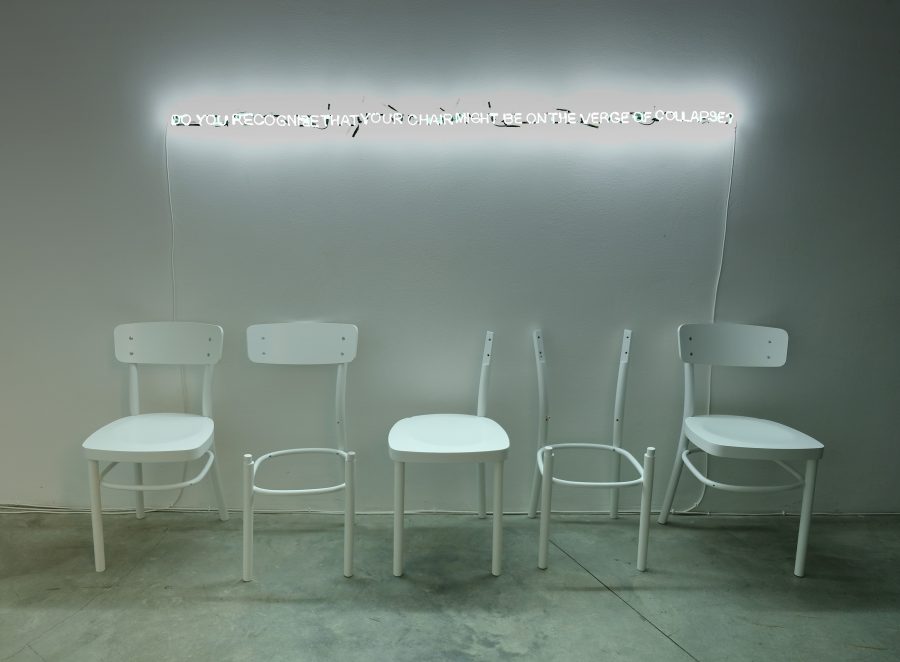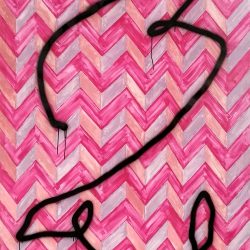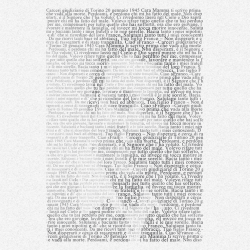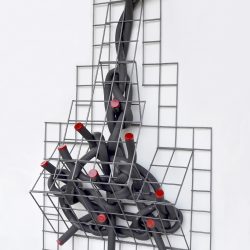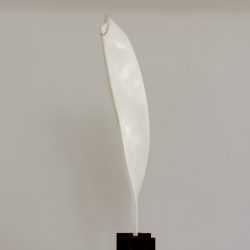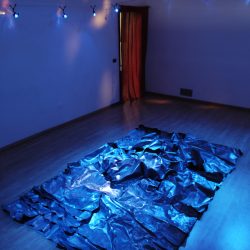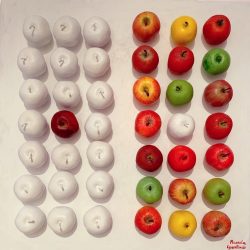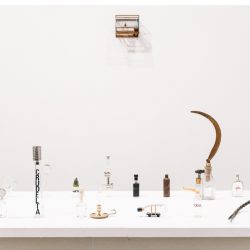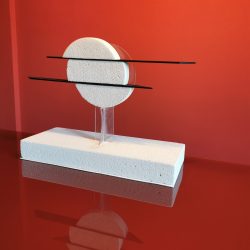work
Fragmented chairs produce fragmented thoughts
| category | Installation |
| subject | Political / Social, Abstract |
| tags | thought proces, perception, fragmented, thoughts, chairs |
| base | 250 cm |
| height | 150 cm |
| depth | 50 cm |
| year | 2021 |
Installation of five fragmented chairs and neon sign. Edition 1 + 1 A.P.
It is legitimate to ask whether the significance of works like "Fragmented Chairs produce fragmented Thoughts" resides in the gestures and in the processes that take place while they are being exhibited, or they are guided by a conceptual map, an experiment that Luli sets up. To distinguish the object, we can – or perhaps we must – necessarily consider the works in question as the result of an interaction between ideas and action. In this way, we can go beyond the mere description and understand their aesthetic magnitude, their nature and the quality of the processes involved in the making.
It doesn’t mimic external reality, but rationally highlights inner connections – that is, the relational dynamics that each of us perceives as meaningful in the infinitely haphazard intermingling that makes up reality. By directly referring to the viewer, the work stimulates a simultaneous recognition of the verified codes of reality and of the ordinary, as well as a critical and personal rearrangement of elements and relations: “Are you realising that your chair is about to break?”.
The audience acts as a spy observing these objects conditioned by their own private history; the audience has the opportunity to choose whether to participate to the works’ attentional control, or to leave. We can thus read them as an ensemble of conceptual schemes, with a preparatory and educational value aimed at future behavioural experiments.
It is legitimate to ask whether the significance of works like "Fragmented Chairs produce fragmented Thoughts" resides in the gestures and in the processes that take place while they are being exhibited, or they are guided by a conceptual map, an experiment that Luli sets up. To distinguish the object, we can – or perhaps we must – necessarily consider the works in question as the result of an interaction between ideas and action. In this way, we can go beyond the mere description and understand their aesthetic magnitude, their nature and the quality of the processes involved in the making.
It doesn’t mimic external reality, but rationally highlights inner connections – that is, the relational dynamics that each of us perceives as meaningful in the infinitely haphazard intermingling that makes up reality. By directly referring to the viewer, the work stimulates a simultaneous recognition of the verified codes of reality and of the ordinary, as well as a critical and personal rearrangement of elements and relations: “Are you realising that your chair is about to break?”.
The audience acts as a spy observing these objects conditioned by their own private history; the audience has the opportunity to choose whether to participate to the works’ attentional control, or to leave. We can thus read them as an ensemble of conceptual schemes, with a preparatory and educational value aimed at future behavioural experiments.



